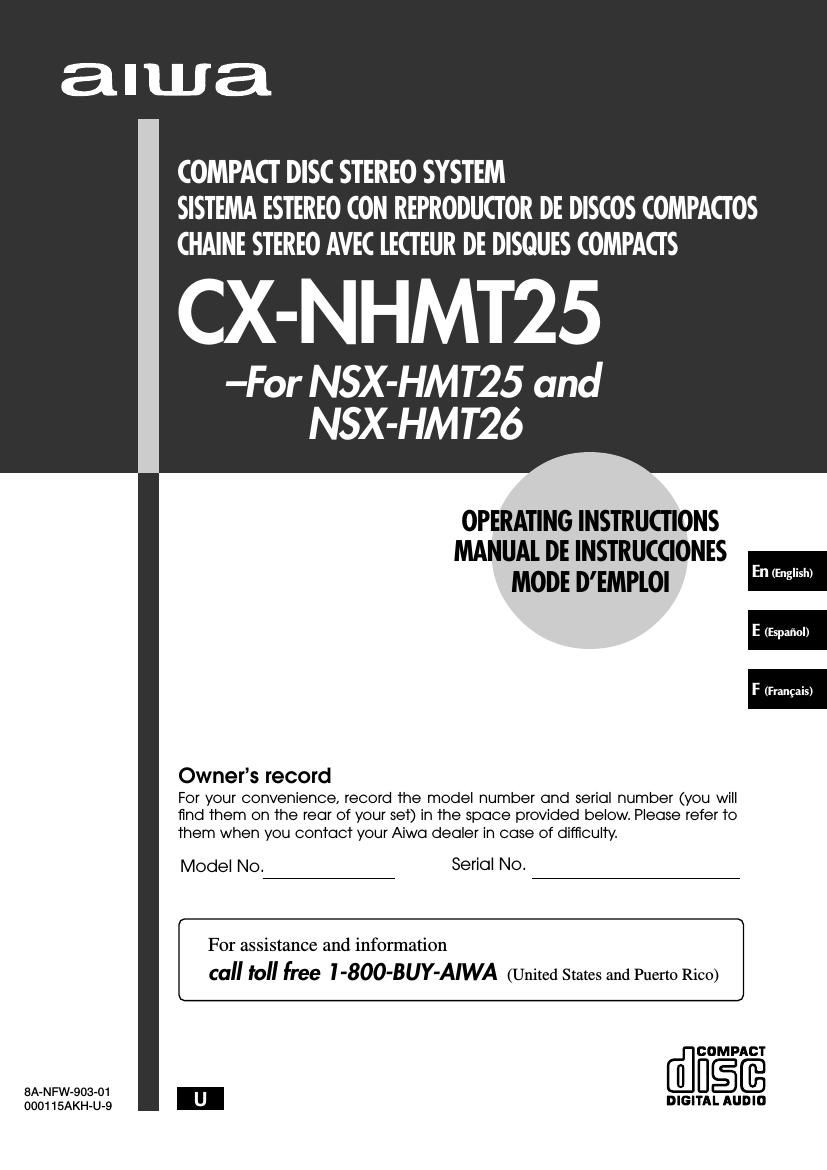Aiwa NSX HMT25 Owners Manual
This is the 74 pages manual for Aiwa NSX HMT25 Owners Manual.
Read or download the pdf for free. If you want to contribute, please upload pdfs to audioservicemanuals.wetransfer.com.
Page: 1 / 74
